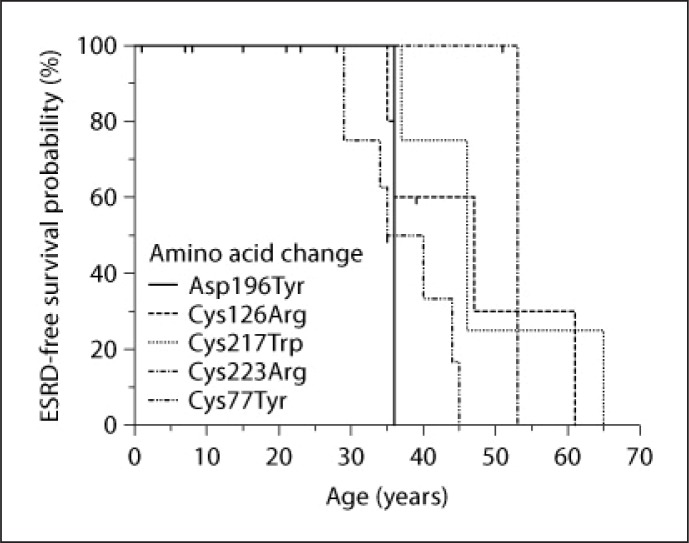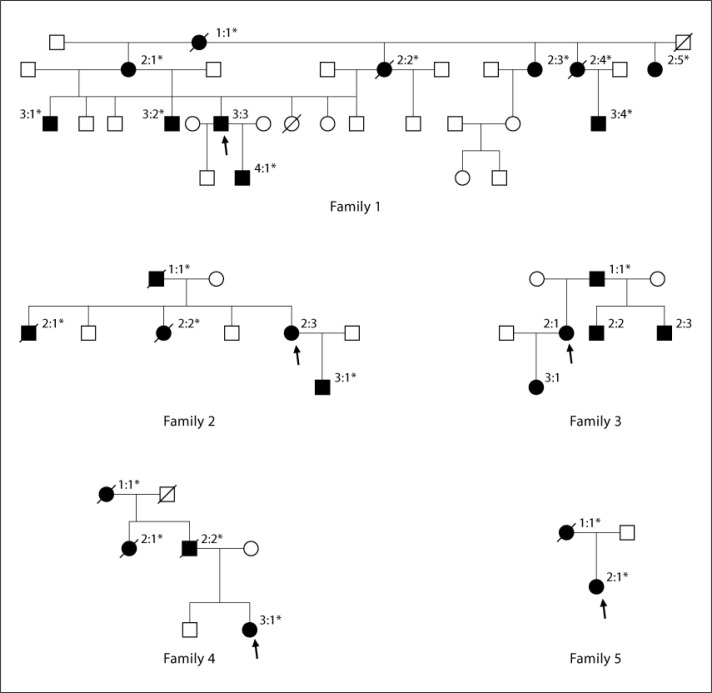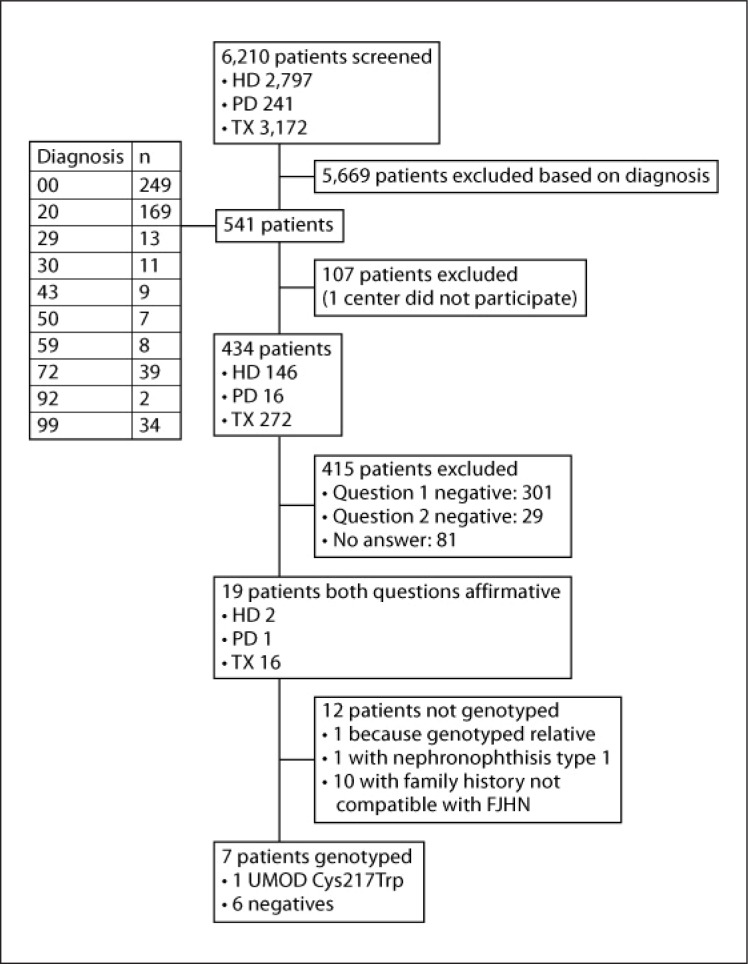Epidemiology of uromodulin-associated kidney disease - results from a nation-wide survey.
引用次数: 23
Abstract
Background/Aims: Uromodulin-associated kidney disease (UAKD) is caused by uromodulin mutations and leads to end-stage renal disease. Our objective was to examine the epidemiology of UAKD. Methods: Data from all UAKD families in Austria were collected. Patients included in the Austrian Dialysis and Transplantation Registry (OEDTR) with unclear diagnoses or genetic diseases were asked whether they had (1) a family history of kidney disease or (2) had suffered from gout. Patients with gout and autosomal dominant renal disease underwent mutational analysis. Kaplan-Meier and Cox analysis was employed to estimate time to renal failure. Results: Of the 6,210 patients in the OEDTR, 541 were approached with a questionnaire; 353 patients answered the questionnaire. Nineteen of them gave two affirmative answers. In 7 patients, an autosomal dominant renal disease was found; in 1 patient a UMOD mutation was identified. One family was diagnosed through increased awareness as a consequence of the study. At present, 14 UAKD patients from 5 families are living in Austria (1.67 cases per million), and 6 of them require renal replacement therapy (0.73 per 1,000 patients). Progression to renal failure was significantly associated with UMOD genotype. Conclusion: UAKD patients can be identified by a simple questionnaire. UMOD genotype may affect disease progression.



尿调素相关肾病的流行病学——来自一项全国性调查的结果
背景/目的:尿调素相关肾病(UAKD)是由尿调素突变引起的终末期肾脏疾病。我们的目的是研究UAKD的流行病学。方法:收集奥地利所有UAKD家庭的数据。奥地利透析和移植登记处(OEDTR)中诊断不明确或遗传疾病的患者被问及是否有(1)肾脏疾病家族史或(2)痛风病史。痛风和常染色体显性肾病患者进行突变分析。Kaplan-Meier和Cox分析用于估计肾功能衰竭的时间。结果:在OEDTR的6210名患者中,541名患者接受了问卷调查;353名患者回答了问卷。其中19人给出了两个肯定的答案。7例患者发现常染色体显性肾病;1例患者发现UMOD突变。由于这项研究的结果,一个家庭通过提高意识被诊断出来。目前,奥地利有来自5个家庭的14名UAKD患者(1.67 /百万),其中6名患者需要肾脏替代治疗(0.73 / 1000)。进展到肾功能衰竭与UMOD基因型显著相关。结论:UAKD患者可通过简单的问卷进行识别。UMOD基因型可能影响疾病进展。
本文章由计算机程序翻译,如有差异,请以英文原文为准。
求助全文
约1分钟内获得全文
求助全文
来源期刊
自引率
0.00%
发文量
0
审稿时长
12 weeks
期刊介绍:
An open-access subjournal to Nephron. ''Nephron EXTRA'' publishes additional high-quality articles that cannot be published in the main journal ''Nephron'' due to space limitations.

 求助内容:
求助内容: 应助结果提醒方式:
应助结果提醒方式:


